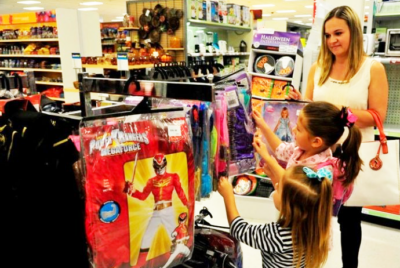Generation Alpha — known for introducing slang such as “sigma” and “skibidi” into our national lexicon — is coming of age in a time of unparalleled digital connectivity, making it the youngest generation to experience brand awareness and buying power.
Despite their young age and limited income, their influence is already rocking the retail industry — and will only continue to grow in the years to come, according to research from Advantage Unified Commerce (AUC), a division of Advantage Solutions that provides omnichannel solutions across e-commerce, lifestyle and retail platforms. Currently, Gen Alpha is worth over $28 billion in direct spending and drives billions more in indirect spending, according to a Numerator report.
Already, one-third of Gen Alpha kids — those individuals born since 2010 — are making some purchases on their own, per the AUC research.
And cue the collective sigh from parents of Gen Alpha kids across the land: 95% of parents say that their kids influence their purchasing decisions, including at the grocery store, where three-quarters of kids accompany their parents on shopping trips.
“Gen Alpha’s tech-savvy nature will revolutionize the industry, but their spending power is still years away,” says Jason Katz, senior vice president of strategic planning at AUC. ”For now, brands should focus on shopper-centric strategies that cater to parents’ mindsets and help bridge the generational divide.”
The Numerator report, cited by AUC’s research, notes that many of Gen Alpha consumers have access to their own cash, through weekly allowances (an average of $22 per week) that they spend on toys, snacks, food, services, electronics and durables.
“Gen Alpha is highly influenced by online content, often shopping through e-commerce platforms and apps,” Katz says. “They frequently explore products on platforms like YouTube, TikTok and even online gaming environments where they encounter ads and influencer recommendations. Through ‘kid-friendly’ shopping apps or shared family accounts, they are beginning to make supervised purchases, especially in digital spaces like app stores.”
But, he adds, “While online is prominent, in-store purchases are also common. Retailers are increasingly designing child-friendly in-store experiences, with interactive displays and product placements at eye level for kids, especially in the toy and snack aisles.”
Navigating screen time concerns
For brands and retailers, the key to unlocking Gen Alpha’s influence is through digital. Four out of five Gen Alpha parents say their children under 14 have access to digital devices, with tablets and smartphones leading the way, with 78% and 71% of users, respectively. Two-thirds of Gen Alpha also have access to either a social media profile and/or gaming account (such as Roblox or Nintendo Switch).
According to their parents, these kids learn about new products from YouTube (55%) — more than from their friends and family. Other social media platforms where they learn about new products include Tik Tok (34%), Facebook (32%) and Instagram (30%).
All of that screen time is a concern for parents, who worry that it cuts into family bonding time. Brands and retailers that can help solve for this challenge can win hearts and fill carts.
For instance, Katz points to Home Depot’s introduction of Virtual Kids Workshops on Roblox, which offers interactive projects that mimic the retailer’s in-person workshops, promoting DIY skills and a bridge for parents to connect with their children in the digital environment.
“The Virtual Kids Workshops allow the Home Depot to interact with the future generation of doers and their parents by meeting them where they are — online,” Katz says, noting that millions of Gen Alpha kids — and their parents — have participated.
How brands can engage Gen Alpha (and their parents, too)
Katz suggests six ways that brands and retailers can better engage Gen Alpha and their parents:
Foster joint screen time. Develop digital experiences that parents and Gen Alpha can enjoy together.
Help them get off their devices. Encourage offline activities that facilitate family bonding moments that parents of Gen Alpha desire.
Bridge the generational divide. Be an ally for parents by making your brand a solve for helping parents of Gen Alpha to connect with their kids. While parents want to pass on their favorite childhood brands, these may not appeal to today’s kids. Brands must engage both parents and Gen Alpha to stay relevant.
Omni is essential. While 63% of Gen Alpha’s parents shop online, in-store shopping remains dominant (78%), with 75% of kids accompanying their parents on these trips. This highlights the critical need for a seamless omnichannel approach that integrates both physical and digital shopping experiences.
Digital content that excites kids — and their parents. Focus digital content on learning useful skills, fostering creativity and igniting imagination.
Take a modern twist. Expand your existing brand into Gen Alpha culture to re-instill relevance. For legacy brands, that could mean a more engaging digital presence, gamification and/or social media engagement.
While screen time is frequently seen as a barrier to meaningful family interaction, Katz says, 90% of today’s parents are adopting an ‘if you can’t beat them, join them’ approach, recognizing that shared screen experiences, like family gaming, can foster connection.
“This evolving dynamic presents brands with a unique opportunity to redefine family bonding by embracing technology as a bridge rather than a barrier,” Katz says. “By aligning with these joint screen activities, brands can tap into modern family moments, offering products that seamlessly integrate into these new, tech-enhanced experiences.”




